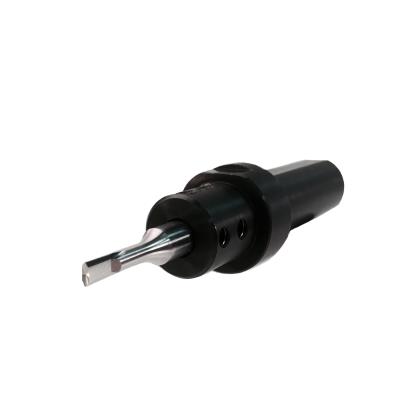
Slater Tools announces its range of indexable punch broaches and holders to machine shapes in workpieces where rotary broaching may not be feasible. Such cases include (greater) depth of operation, tough materials, tooth height, chip evacuation challenges and applications that require orientation.
Punch broaches are available to machine keyways, hexagons, Torx-style sixlobes, serrations, splines and squares. In combination with the range of punch broach holders, users can expect high repeatability on lathes, milling machines and presses, even in tough applications. Punch broaching can also offer an economic advantage over alternative methods of shape making.
Slater's indexable punch broach holders facilitate the process by using partial form broach tools and indexing either the tool or the workpiece, which in turn greatly reduces cutting pressure. This method of broaching is most beneficial for applications requiring no witness (predrill) marks, with excessive material removal, or where timing the form to a feature on the part is required.
“It is important to us as a company to offer solutions, such as idexable punch broaches, for applications where the rotary broaching process is not a viable option,” stated Jeff Tryles, sales manager for the company.
The holders feature a rigid design with standard shank diameters ranging from 0.625” – 1.250”. Metric shanks are also available.
Contact Details
Related Glossary Terms
- broach
broach
Tapered tool, with a series of teeth of increasing length, that is pushed or pulled into a workpiece, successively removing small amounts of metal to enlarge a hole, slot or other opening to final size.
- broaching
broaching
Operation in which a cutter progressively enlarges a slot or hole or shapes a workpiece exterior. Low teeth start the cut, intermediate teeth remove the majority of the material and high teeth finish the task. Broaching can be a one-step operation, as opposed to milling and slotting, which require repeated passes. Typically, however, broaching also involves multiple passes.
- gang cutting ( milling)
gang cutting ( milling)
Machining with several cutters mounted on a single arbor, generally for simultaneous cutting.
- milling
milling
Machining operation in which metal or other material is removed by applying power to a rotating cutter. In vertical milling, the cutting tool is mounted vertically on the spindle. In horizontal milling, the cutting tool is mounted horizontally, either directly on the spindle or on an arbor. Horizontal milling is further broken down into conventional milling, where the cutter rotates opposite the direction of feed, or “up” into the workpiece; and climb milling, where the cutter rotates in the direction of feed, or “down” into the workpiece. Milling operations include plane or surface milling, endmilling, facemilling, angle milling, form milling and profiling.
- shank
shank
Main body of a tool; the portion of a drill or similar end-held tool that fits into a collet, chuck or similar mounting device.

